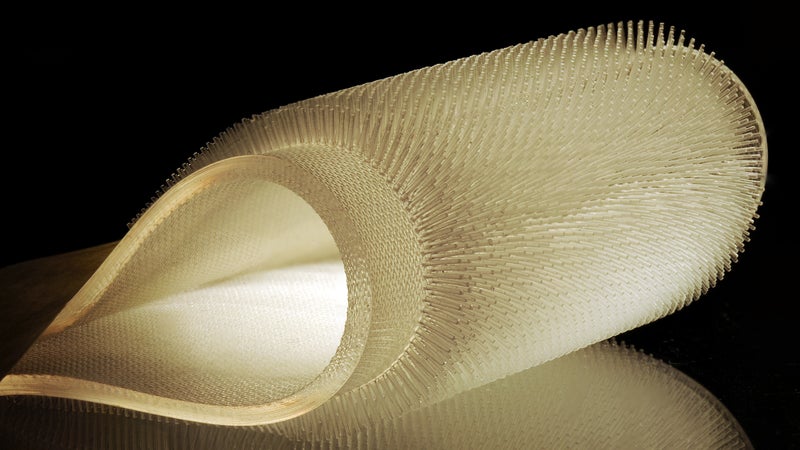Your next wetsuit might be furry, thanks to a new material . The stuff, which doesn’t have a name yet, is a sheet of rubberized hair that mimics the pelt of beavers and otters. The goal is to turn the material into a thin wetsuit that has an ultra-high warmth-to-weight ratio.
“There are basically two ways that mammals stay warm in cold water—blubber and fur,” says Peko Hosoi, the head of sports technology and education at MIT, and the lead engineer on the project. “Big animals like walruses and sea lions use blubber, which is thick and heavy and cumbersome. But small, more agile animals like beavers and sea otters use fur, which actually holds onto pockets of air when they’re diving in and out of water. That air trapped between the hair follicles works as insulation for the animal.”
Hosoi says surfing seemed like the perfect application because the material could be made thinner than a traditional neoprene wetsuit, freeing up the surfer to be more agile on the wave. The rubber hairs continue to trap air even out of the water, so surfers can stay warm while waiting for waves.
Here’s how it works: three-millimeter polydimethylsiloxan (PDMS) rubber hairs are attached to the outside of a thin rubber base layer. As the fibers meet the water, the weight of the liquid pushes air into the space between the hairs, which are about one millimeter apart. That pressure creates tiny air pockets. The thermal conductivity of air is two to five times smaller than that of rubber, meaning it takes that much longer for your body heat to pass through. As a result, Hosoi believes they’ll be able to make a wetsuit that offers the same insulative properties while being two to five times thinner than your standard suit.

As soon as the news was announced, the surfing world took note. Hosoi has already received emails from surfers asking where they can get their hands on the new material. Hub Hubbard, the wetsuit developer at Patagonia who helped the company develop its new plant-based wetsuit material, is also watching to see where it goes. He says wetsuit thermal liners, which are made of anything from merino wool to space-age fibers with infrared technology, have reduced wetsuit thickness by up to one millimeter while retaining the same level of warmth. But the idea of a beaver-inspired wetsuit that uses air as an insulator could be revolutionary.
“It’s super interesting,” Hubbard says. “Our innovation team has played around with biomimicry on other projects, and I think there’s potential with this kind of thing. Whether they can make a suit that can withstand the turbulence of being in surf is the real question. I’m really hopeful it works out.“
We still have a few years before you see a hairy wetsuit on the rack in your local surf shop, however. The next step for Hosoi and her team at MIT is to figure out how to manufacture the material on a scale that could be useful and cost effective for wetsuit companies. As for what these furry wetsuits might look like, Hosoi says they won’t look much different than your traditional suit. “It’s made of very small follicles in a highly controlled pattern, so it’s not going to look like Cookie Monster is out there surfing,” she says.


